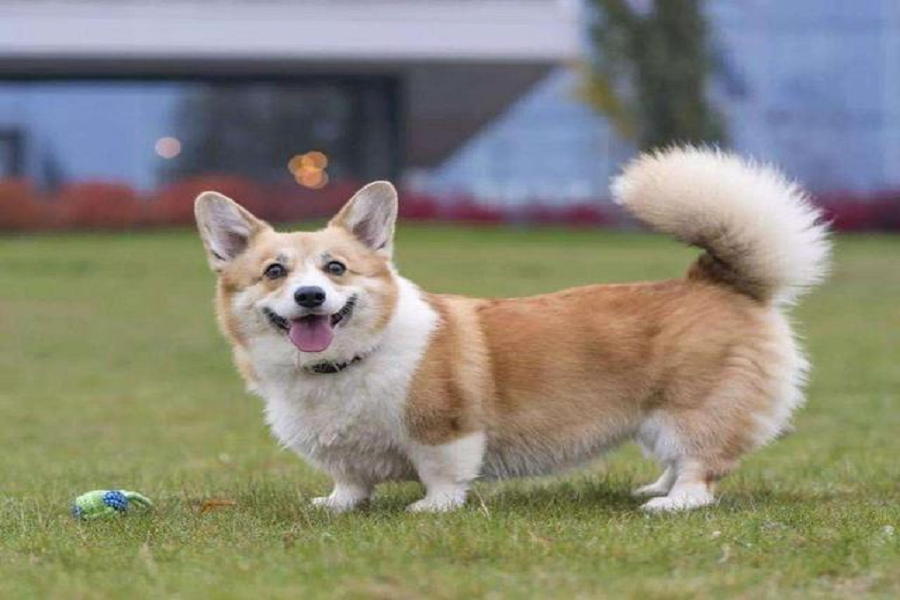Rare Dog Breed The Japanese Shikoku Shikoku (sometimes called the Kochi-Ken) is a medium-sized Spitz from Japan with a thick coat, pointy ears, and a short, upward curling tail. These dogs were bred to hunt wild boar and were seen as faithful companions. Shikoku dogs are rare, even in Japan. All Shikoku dogs have unique markings. Known as urajiro, these white or light-colored patches appear on the sides of the muzzle, on the cheeks, on the eyebrows, on the chin and under the neck, on the chest and abdomen, under the tail, and on the inside of the legs. Although it is similar to the more common Shiba Inu‘s larger version, but the Shikoku is generally calmer, less stubborn, more obedient, and more submissive than the Shiba.
This breed is best suited for experienced owners, as the Shikoku requires constant training and has a tendency to be protective. Shikoku’s Character Traits Ancient Shikoku dogs are known as primitive breeds, which means they retain more of their wild characteristics than other domesticated dogs that have been accustomed to living with humans over the centuries. Due to their nature, Shikoku’s temperament around others can vary greatly depending on socialization as a puppy. They are calm, introverted, and loyal to their owners, but are generally not suitable for households with other pets or young children. History of Shikoku Dogs Shikoku Dogs were developed in the mountains of Shikoku Island in Japan. Although loosely bred, three varieties have emerged from different parts of the island. These breeds are named after their breeding grounds: Awa, Kagawa and Hata. It is said that the safflower variety is considered the purest and most desirable due to the inaccessibility of the safflower area. Today, Shikoku is a single breed with no breed. Japan designated the breed as a natural monument in 1937. Shikoku Inu, also known as Kochi Inu, originated from Kochi Prefecture in BC and was bred as a wild boar hound.
Even now, some hobbyists have trained it to hunt in order to maintain their original abilities. According to the history of Shikoku dogs in Japan, in the past, there were more than three kinds of Shikoku dogs bred in each origin, but now pure-bred Shikoku dogs only exist in the relatively remote Honkawa area. Shikoku dogs need a lot of exercise to raise them , grooming and training, they should be kept by an experienced owner. It is important that the owner of this breed is well prepared and able to dedicate a lot of time to their care. Exercise Shikoku is a hunting dog that burns a lot of energy. The owner must commit to providing a rich daily exercise and mental stimulation; this breed is especially suitable for owners who spend most of their time outdoors. Try long walks, hikes, and explorations, as well as throw toys or balls, but always keep your Shikoku on a leash or in a safe, enclosed place like your backyard.
For centuries, the Shikoku dog has been made to hunt and cannot be trusted at all, as it may pursue dogs, cats, squirrels or other animals, ignoring the owner’s pleas to stop. Grooming Shikoku’s short double coat can be washed and worn, and it does not require trimming. The outer coat is rough and the undercoat is soft and dense, providing warmth in winter. Every spring, Shikoku “blows hair,” a term used to describe the seasonal shedding of undercoat. During this period, Shikoku fell off in large numbers. Daily brushing and grooming with a depilatory tool can speed up the process. Outside of this time, Shikoku will shed moderately and only need regular brushing a few times a week. The coat is naturally clean and has no dog odor. Trim your dog’s nails every two weeks and check his ears regularly to make sure they don’t appear red or inflamed. If your ears are dirty, clean them with a pet-safe ear cleaner with cotton balls or gauze squares.
Training Although Shikoku dogs are intelligent and fairly obedient to their owners, the breed is still primitive. It’s a bit headstrong and independent, so training can be a challenge. Train daily with positive tips and rewards and be a fair and consistent leader at all times. Shikoku dogs have a high prey drive (instinct to chase and kill small animals) and can be territorial or aggressive towards dogs and other animals. However, if together, Shikoku may be able to live peacefully with another family pet. These dogs are reserved and aloof toward strangers, so frequent socialization early in puppyhood is critical to curbing overprotection. Common Health Issues Shikoku is considered a healthy breed. However, like all purebred dogs, this breed can develop certain genetically related health conditions.
Responsible breeders test their adult Shikoku before breeding to make sure they don’t pass on bad medical issues. Here’s what your dog may experience: Elbow, knee, or hip dysplasia: Dysplasia is caused by abnormal joint development, usually with signs of lameness or trouble standing, sitting, or lying down. Dislocated patella: This condition affects the knee joint, which slides out of place when your dog moves around. Epilepsy: This neurological disorder can cause seizures in dogs. Epilepsy can usually be treated with medication.
Allergies: Like most dog breeds, Shikoku dogs can be allergic to environmental conditions, food, fleas, and certain substances (contact dermatitis). Diet and Nutrition As with all dog breeds, Shikoku should consume high-quality dog food in moderation to avoid being overweight or obese. Excessive weight can lead to the development of joint disorders such as hip dysplasia, knee dysplasia, and arthritis. Obesity can also lead to other serious health problems, such as diabetes. Learn about your dog’s specific needs to determine a healthy diet and portion size schedule.

























